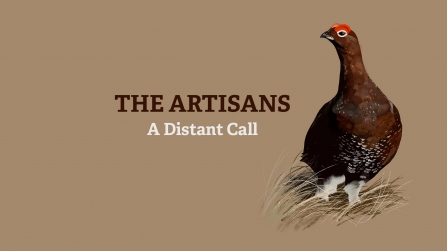
The Inglorious 12th – A Distant Call

To highlight why the date is far from glorious, the band I play in The Artisans are releasing a charity protest track ‘A Distant Call’, which we’re delighted is being backed by wildlife campaigners Chris Packham and Mark Avery.
Inspired after reading Mark Avery’s book titled ‘Inglorious’, we decided to write a song to help raise awareness of what is happening to our wildlife and the environment as a result of the so called ‘sport’ which takes place on the UK’s uplands.
Driven grouse shooting consists of a line of beaters who have the job of blowing whistles and waving flags to chase grouse towards the line of guns - the shooters. As it can cost thousands of pounds per person for a day of shooting, there’s a lot of money in the old Victorian sport for the small number of wealthy estate owners.
As the owners receive farm subsidies, this sport also costs taxpayers for the lives of half a million red grouse and other wildlife to be taken each season. To top it off, the land also pays as it is intensively managed to increase grouse numbers.
Many see the purple heather, which dominates the uplands, as natural beauty without realising its growth is often the result of the land being rotationally burnt. The burning produces young heather shoots which grouse eat, whilst the established heather is where the grouse nest.
The boggy peatland, found on moorlands, traps in water and is the UK’s biggest carbon store. The precious peat which is often burnt, again to encourage heather growth, releases carbon into the air and destroys its natural drainage system which helps prevent flooding and water running downstream. When the land is dry it is also more vulnerable to wildfires. The burning therefore also contributes to climate change and reduces the moors resilience to it.
As natural predators eat grouse, they are often killed in massive numbers too including foxes, stoats, birds of prey and mountain hares. This year, the analysis of the Natural England satellite tagging study of hen harriers showed that their risk of death was ten times higher in grouse moor areas. As estate owners believe they spread a tick carrying a virus to the grouse, the culling of mountain hares takes place on many grouse moors and has been blamed for their dramatic decline - Scotland's mountain hare population is at just 1% of the 1950s level.
So, with the above in mind, the recent published argument that grouse moors support some endangered ground nesting birds such as lapwings and curlews should come with little praise. Whilst this barren predator-controlled environment may support a few species it certainly fails the many.
The case against banning this sport is often based upon the claim that grouse moors bring in big money for the economy. However, the facts reveal otherwise. The Moorland Association estimates that the combined contribution of grouse shooting, in England and Scotland, is less than 0.005% of the UK’s GDP - a contribution made from 8% of its land.
With my fellow Artisans, we have tried to capture these messages in a song enhanced by the beautiful illustrations produced by Brighton based illustrator Mia Underwood. We discovered Mia’s work through her recent commission with The Wildlife Trusts on their current Wilder Future campaign.
Released as a download track, all proceeds will go to Wild Justice to help them continue to fight for legal justice for our wildlife.
You can watch the video here now: https://www.youtube.com/watch?v=63BFuSSLMfQ and download it from the inglorious 12th of August here: https://theartisansmusic.bandcamp.com.
Please note, this blog and song reflects my own opinion as a wildlife lover and trustee for Northumberland Wildlife Trust but may not reflect the detailed policy stance of The Wildlife Trusts.

